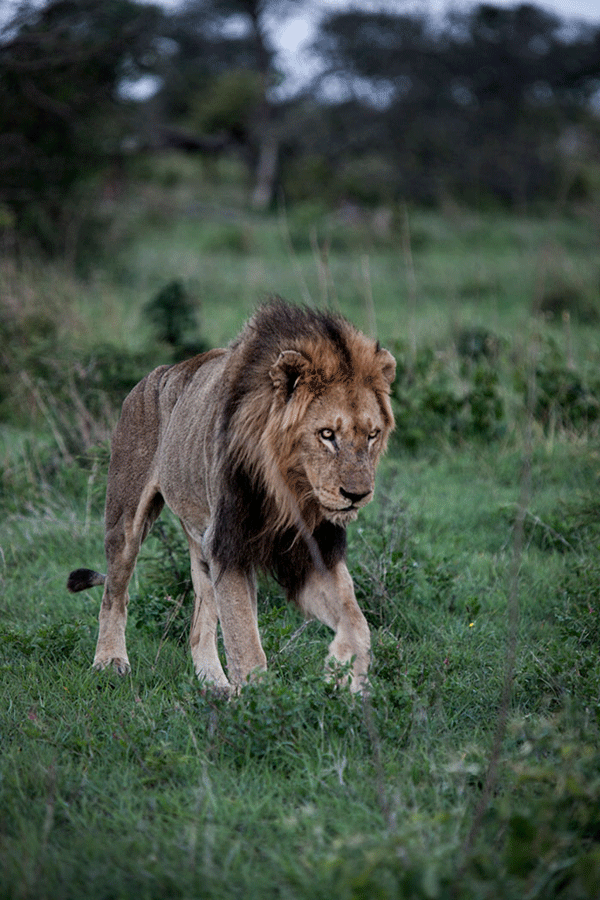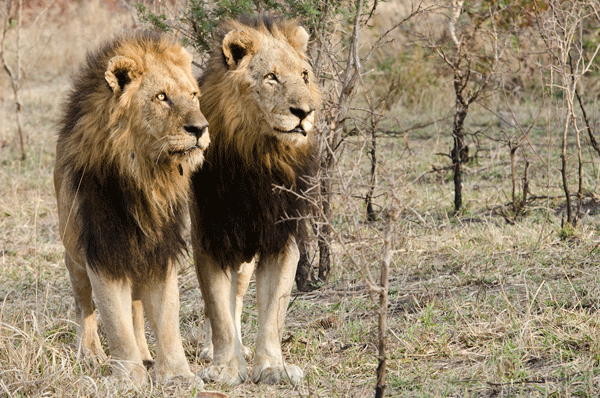Legend Lives On: Mapogo Lions over the Last Year
Here we are, just over a year on from the death of a lion legend who, during his reign as king, was referred to as the biggest, baddest beast since the maneless, man-eating lions of Tsavo at the end of the 1800s. Over a hundred years of lion legacy has passed between then and now, yet in all the time of lion kings having lived, reigned, killed and been killed; none have been as noteworthy as the Mapogo Lions. A coalition of very distinctive, dark-maned brutes made an unforgettable impression on both the wildlife and the wild-watchers in the Sabi Sand Reserve in South Africa. After lethal fights for dominance and exultant triumphs that left pride leaders bloodied and broken, an alliance of characterful males stood tall as the dreaded Mapogo in the Sabi Sand’s western block.
Visit the Lions of Sabi Sand - book now
In March 2012, an emblazoned battle broke out with the Southern Pride males and the aged legends took on these young, determined fighters. Mr T, as was one of his esteemed nicknames, fought his final battle and died in a violent fashion that had he, himself, had enforced on any foolish opponents in the past. Mr T had emerged as the leader of the Mapogo coalition, as he and his comrades, Makulu and Pretty Boy, tore through territories, annihilating any challengers in their path. Mr T gained a reputation for the merciless killing of cubs and females as he staked his claim in a new pride – a natural instinct and essential to the dynamics of lion existence. We should be reminded that “evil” and “cruel” are descriptions assigned by humans and are not accurate descriptions of the nature of a lion such as Mr T, who was respected by subordinates, admired by young’uns and desired by females within his kingdom. He and his Mapogo allies represented the perfect specimens of power and pride, while their physical strength carried them through an extended period of leadership – into old age and ultimately into death, in the case of the renowned Mr T.
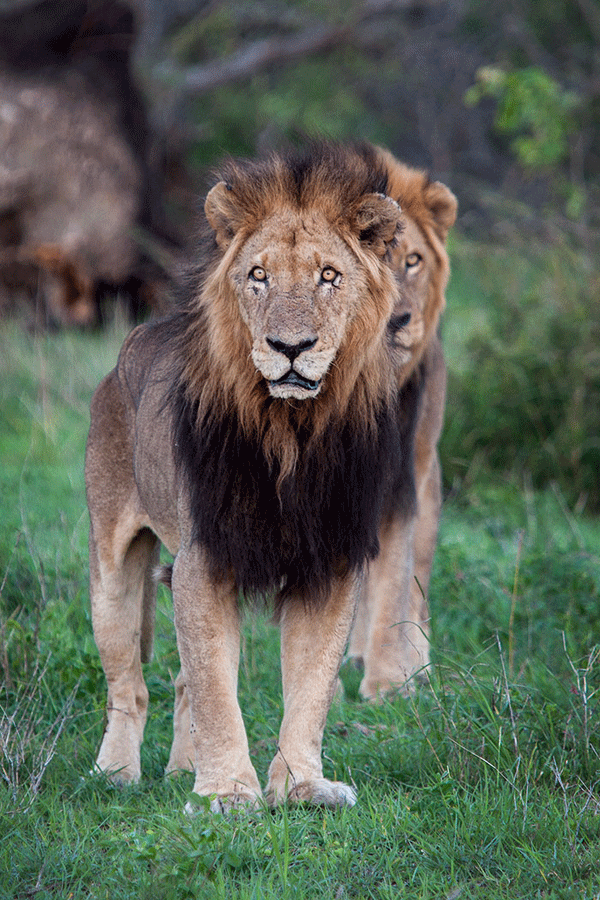
Reflecting on the past year to the time of this king’s death, it was widely assumed that Makulu and Pretty Boy were to slink away quietly and accept their fate as a weakened duo who could no longer lead. They would be best off seeking solace away from the limelight and retaining their dignity instead of publicly losing a challenge to the younger, stronger males. At 12 and 15 years of age last year, the Mapogos had lived a long life by lion standards, particularly given the eruptive nature of their conflict-ridden existence as dominant males. The many followers that had adopted a fanatical interest in these legends said a sorrowful goodbye, not only to the brutal leader, but to the remaining two members, who by every expert’s opinion, were to be viciously hunted and killed by younger, stronger males if found. Articles have been written about the predicted future of Makhulu and Pretty Boy and an active Facebook page has kept the curious public well-informed of their movement since the death of Mr T.
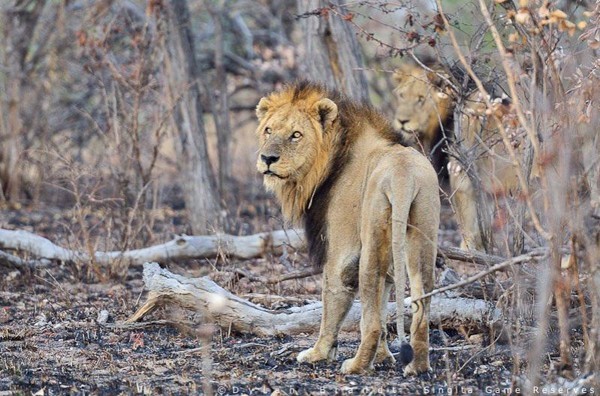
What has occurred in the last year has reignited hope within the hearts of Mapogo fans, even though it is widely acknowledged that these males have seen their best days and now is the time to accept their deaths. A battle with the two Kruger Pride males left Makulu worse for wear and Pretty Boy skulking in the territory he had once called his own, and a sorrowful community of supporters once again prepared to mourn the final the loss of the Mapogo pride. It wasn’t until later in 2012 that both of these veterans were sighted, side by side, entering the Kruger National Park through the gate attributed to Paul Kruger, himself. The vision of a scrawny Pretty Boy and the dulled glow of Makulu’s eyes sent a surge of excitement that lifted the spirits of all who were hoping to see the Mapogos again. A sad image of their bedraggled appearances, yes, but a living representation of the strength and persistence that branded them “legends”.
Hopeful curiosity prevailed once again when the pair were seen feeding on a buffalo in October last year – a progressive sign of strength. Alas, a good feed sent both lions into hibernation, and neither were seen again until the birth of the New Year. In January 2013, Makulu – a term Zulus use for a respected elder – made an appearance at MalaMala, neighbouring his old haunt, the Sabi Sand Reserve. The fact that he was alone leads us to assume one thing – the oldest of the famed Mapogo coalition has outlasted his younger comrades and his dynamite career has come down to a solo performance.
At an age such as this, Makulu has more than exceeded his life expectancy, and with the amount of human interest this superb specimen has generated, there is sure to be a vast community of people wishing him a dignified and peaceful death. This is sadly not the case in the lion kingdom, and as with the violent deaths caused by this reputable leader himself, he too is expected to go the same gruesome way. Courteney Blunden, owner of Africa on Foot and avid lion expert has painted the picture of reality in describing the loss of a king like Makulu, and indeed all the Mapogo members, as comparable to the end of an era. Having spent many years in close range with the Ross Pride of the Klaserie, and other individual greats, Courteney has witnessed the “heart-wrenching” account of a leader taking his final fall. He recalls observing previous leaders nearing the end of their lives, enduring nights riddled by dreams that are filled with the ghosts of their pasts.
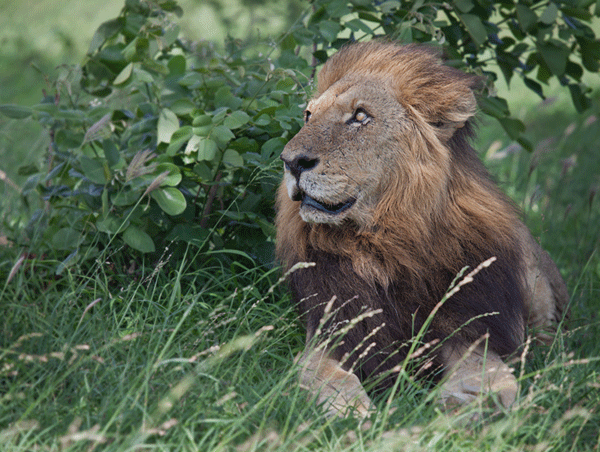
Tragically, the way these beasts rule is the way we should expect them to die. Courteney explains that what is often the case is death after being “mauled within an inch of their lives, lying alive with a severed spine or a gaping hole through the throat or lung”. Without the strength to hunt and eat, the lion’s condition deteriorates and sometimes an attempted attack on prey can result in fatal wounds inflicted by horns, tusks, teeth or hooves. Most brutally, Courteney informs us that should the king be really unlucky, “his loss of condition and starvation will leave him defenceless against an arch rival – the hyena. Of all possibilities, this is the most disturbing and demoralising for us to witness.”
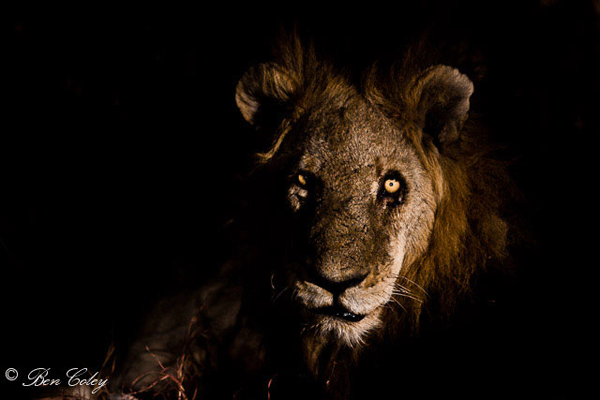
Makulu was last seen alone, but alive. We can legitimately assume that he is still out there, laying low and managing to retain his strength; however, the reality is that this male lion may be taken out savagely, the way most others have lost their lives before. We will keep our eyes and ears open for news from the last of the Mapogos and most of us will mourn the death of this notorious pride of lions once the last of Makulu is seen, but what we can look forward to is the reign of the offspring they have left behind. It is because of their staggering strength and relentless victories that the Mapogo gene will continue and the prowess of the lions of the Private Kruger Reserves and the National Park itself, will have been born of the legends; Mr T, Pretty Boy and Makulu.
